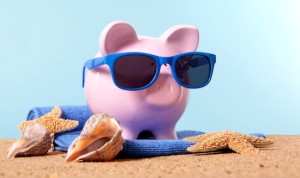 Today’s top story: Black Friday snafus and the insurance that fixes them. Also in the news: Holiday credit card promotions, how to skip long lines at the airport without spending a dime, and five things you shouldn’t buy on Black Friday.
Today’s top story: Black Friday snafus and the insurance that fixes them. Also in the news: Holiday credit card promotions, how to skip long lines at the airport without spending a dime, and five things you shouldn’t buy on Black Friday.
Black Friday Snafus and the Insurance That Fixes Them
Protect yourself.
Are Holiday Credit Card Promotions Right for You?
Reading the fine print.
Skip Long Lines at the Airport — Without Spending a Dime
What you need to know.
5 things you shouldn’t buy on Black Friday
Hold out for real bargains.
 Today’s top story: The best time to buy plane tickets. Also in the news: Deciding between options and stocks, everything we know so far about the Tesla Model 3, and how to calculate how much it will cost you to move to a new city.
Today’s top story: The best time to buy plane tickets. Also in the news: Deciding between options and stocks, everything we know so far about the Tesla Model 3, and how to calculate how much it will cost you to move to a new city.  Today’s top story: Staples becomes the latest employer to start paying student loans. Also in the news: Places with the highest and lowest credit scores, why you can’t always bring your cell phone to a new carrier, and the pros and cons of paying for travel over time.
Today’s top story: Staples becomes the latest employer to start paying student loans. Also in the news: Places with the highest and lowest credit scores, why you can’t always bring your cell phone to a new carrier, and the pros and cons of paying for travel over time. Today’s top story: What you need to know about a potential interest rate hike. Also in the news: An education tax credit that could save you $2500, how to save money on your next vacation, and how to calculate how much you’ll lose by cashing out an old 401(k).
Today’s top story: What you need to know about a potential interest rate hike. Also in the news: An education tax credit that could save you $2500, how to save money on your next vacation, and how to calculate how much you’ll lose by cashing out an old 401(k).